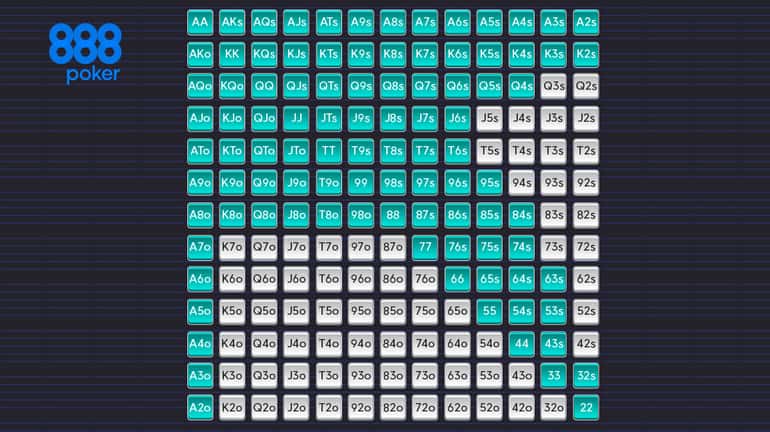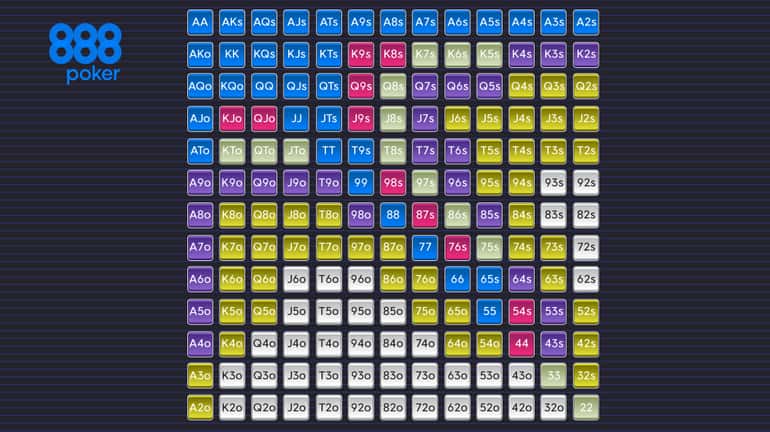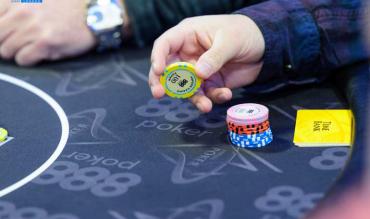One of the great things about poker is the many different ways to play the game. Every player develops his or her style. Some like to mix it up with Any Two cards, while others prefer to sit back and wait for quality hands.
Different characteristics tend to get labelled into categories of playing styles. For instance, reserved and cautious players are called “tight” or “nits,” while those who rarely play a hand but do so with aggressively when they do are deemed “TAG”, which stands for “Tight Aggressive.” There’s also “LAG”, which means “Loose Aggressive.” That’s applied to those players who not only play a lot of hands but also do so uncompromisingly.
Another term you may have heard – or possibly been called yourself – is a “poker maniac.” It’s just the name for the most aggressive of LAG player, though usually with the added caveat that their aggression lacks finesse so to speak. Poker News simply defines being a poker maniac as “a very aggressive player who plays a lot of hands.”
Table of Contents
Separating the TAG from the Maniac
While a TAG player may only play the top 10 percent of hands preflop, a maniac plays a much wider range. They’re consistently betting, raising, and stubbornly refuse to give up on a hand. They tend to “go big or go home” and are either out early or build up a big stack.
A LAG player is prone to play a wide range of hands, including the highlighted range in the chart below:

As for maniacs, they’re prone to even play a broader range. Don’t be surprised to find them playing the added hands below (and maybe even the crap hands not highlighted):

If you’re a poker maniac yourself, you likely get a kick out of the roller coaster ride. Conversely, if you employ a different style and have had to battle against a maniac, chances are you’ve experienced some frustration. They can be a real thorn in your side.
Building Your Table Image
Whether intentional or not, you will build an image at the poker table. The longer you’re in action, the more information you give to your opponents. They see how you play, what sort of hands you showdown, and more. Right or wrong, they’ll inevitably build a profile on the kind of player that you are. Strong players are aware of this and work to manipulate their table image.
There are many things you can do proactively to craft a table image –
- from what you wear (i.e. sunglasses and headphones might advertise you’re a serious player not looking for social interaction);
- to the hands you showdown (i.e. voluntarily showing winning hands even when you don’t have to in the hope your opponents think you only play winners).
One strong play is to build an image of being a table maniac when employing a tighter-than-perceived style. That’s because players are more prone to pay off a maniac; after all, they could be playing any two cards. To do this, some players will play a TAG style early when it’s cheaper to play pots.
They begin building an image as a maniac but mat some point,shift gears when the stacks get deeper or tournaments progress. They do this by tightening up and playing only quality hands. Unless they catch on, the other players will still consider him a maniac and act accordingly.
If you’re not the poker maniac at the table, identify whether or not there is one. If so, try to determine if your opponent is an unsophisticated maniac (signs include playing with reckless abandon, a seeming disregard for money, lack of poker fundamentals). Or, what we’ll call a “deeper-level” maniac, meaning a solid poker player who shows some finesse while playing a maniac style.
The latter is much more dangerous than the former and one you always want to be wary of (watch for them to shift gears as mentioned above).
Best Position Against a Poker Maniac
Position is power in poker. Imagine a table full of 888poker Ambassadors in Seat 3 and Dominik Nitsche in Seat 4. That means the latter is seated to the former’s direct left and is said to have position – he gets the benefit of seeing what Moorman does before acting himself. On the flip side, Moorman is out of position because he has to act without knowing what Nitsche will do behind him.
So, what is the best position against a poker maniac? Without a doubt, it’s to be seated to their direct left, and against a maniac being in position is a double-edged sword you can wield to poker success. On the one hand, when you have bad cards, you can preserve chips by simply folding whenever the maniac raises.
On the other hand, you have the luxury of waiting for good cards. Let the maniac do what he does while you patiently wait for a premium hand. There’s no need to get fancy or play weak cards. Simply tighten up and wait for the goods. When you finally get a strong hand, hopefully, the maniac will raise, and you can three-bet. That’ll usually result in you either taking down a juiced-up pot or playing for a big one if the maniac defends.
If you happen to be out of position against a maniac, you must proceed with caution. Don’t get involved with weak hands as you’re prone to get raised by the maniac. If you have a strong hand, consider slow playing to trap the maniac- more on such things below.
How to Play Against Poker Maniacs
Assuming a maniac does defend, and you find yourself playing postflop with him or her, you’d better have a game plan, so you don’t get blown off the hand. For example, assume the maniac raises and you three-bet in position with AxKx. The maniac calls and the flop comes down - 7x8x10x.
- What will you do if he leads out?
- Will you bet if he checks?
Given a maniac likes to play any two cards, he does have a lot of hands in his range that hits this flop, which completely missed you. As such, if he leads out just fold. If he checks, maybe consider taking the free card.
Now imagine the same scenario, but you hold pocket aces –
- What would you do if he leads out?
- It’s a scary board but do you want to give up on aces so easily?
- You could raise, but what if he does have a strong hand?
- Are you willing to play for stacks?
There’s a lot of unanswered questions and information to process, but in general, you should be more willing to gamble in thin spots against maniacs. Too often, you’ll be ahead of their range and shouldn’t sacrifice the equity. If you’re not willing to play and defend your strong hands, you’re going to lose a ton when you fold. A maniac will sense that weakness and put you to the test.
Continuing in the hand, let’s say you have aces, flop an ace, and your opponent leads out. What would you do? By just calling you give the maniac an opportunity to fire again on the turn, whereas a raise might scare him off. It depends a lot on board texture, stack sizes, and the like, but in general, when you have a super-strong hand, you want to play it weak and passively to give the maniac a chance to bluff off his chips.
There are many different ways to play against a poker maniac, but when you have a good hand, your goal is simple – to extract as many chips as possible. If the maniac is pushing the action, let him continue to do so and hopefully end up pushing his entire stack your way.
If he’s betting, then he’s building the pot for you. Let him do it. If he checks, then you should bet. Start building a pot and charge him if he wants to see another card.
Who knows, you might even get lucky and have the maniac wake up with a check-raise when you have the goods!
How to Get a Maniac to Fold
Now there are instances where you might want to get a poker maniac to fold. For example, you hold a strong hand like top set but on a very draw-heavy board. In such instances, you may prefer to take down the pot then and there but getting a poker maniac to fold isn’t an easy thing to do.
If they have any part of a hand, they tend to be stubborn, holding on tighter than a dog to a bone. Small bets won’t get the job done. Instead, you’ll need to put in some big bets and raises to make the maniac think twice about continuing. If there’s a flush draw out there, size your bets, so you’re not giving him a reasonable price to draw to it. Don’t be afraid to go all in to scare him off.
Some players just aren’t comfortable playing against a poker maniac. They’re afraid of having their big hands cracked, so they tend to overplay them without getting value. Such players should evolve, up their game, and take advantage of the benefits of playing against a maniac.
That said, some players either don’t want to change or are incapable of it. If that’s the case, you only have two choices on how to play against a maniac – either stay out of his way or toss out a speed bump so big that he steers clear of you.
The best example of this might be having the maniac raise, and a player looks down at a big pocket pair like jacks, queens, kings or aces. Instead of going for value, that player either re-raises way too big (i.e. four times the raise or more) or moves all-in. It’s the ultimate show of strength and should deter any sane maniac from proceeding.
Poker maniacs can be both fun and frustrating, and there’s no denying they bring a different dynamic to any game.
No matter the result, just remember a maniac, like you, has the right to play his two cards any way he wants!


